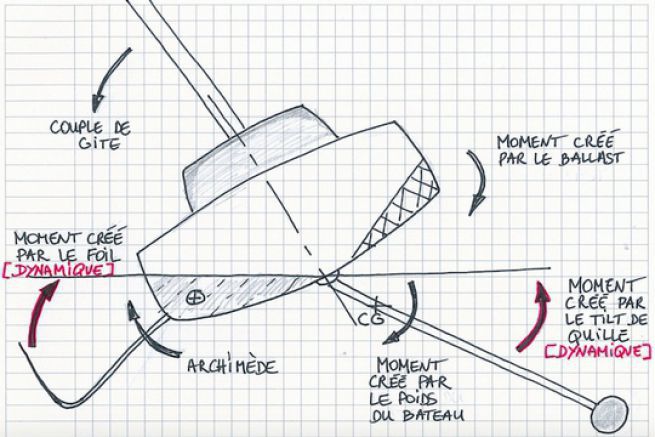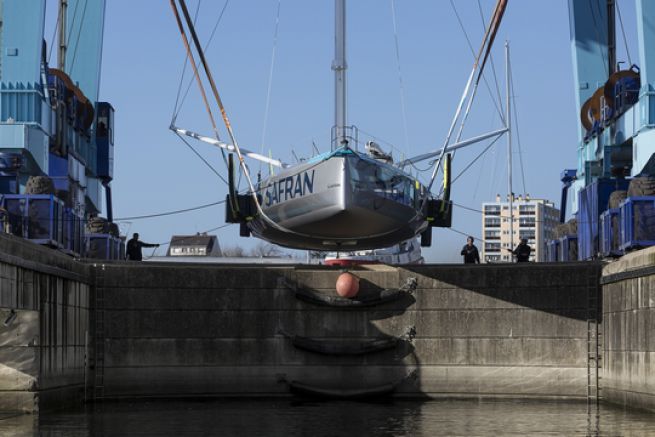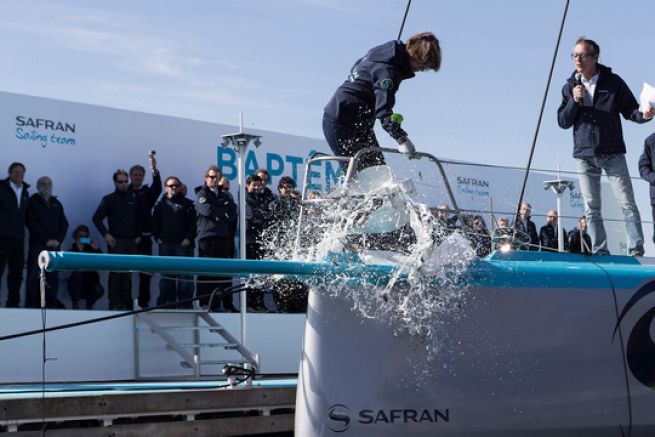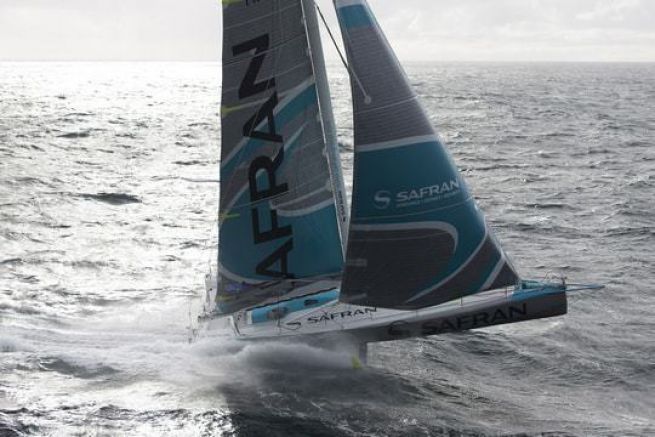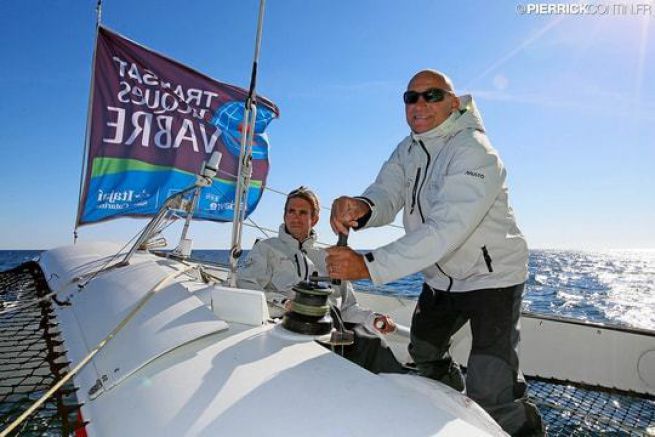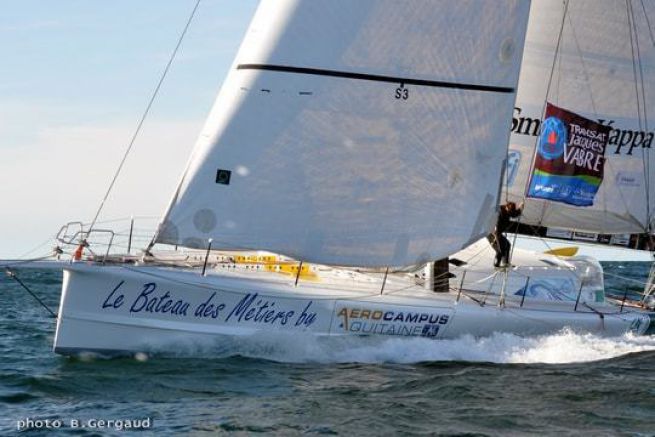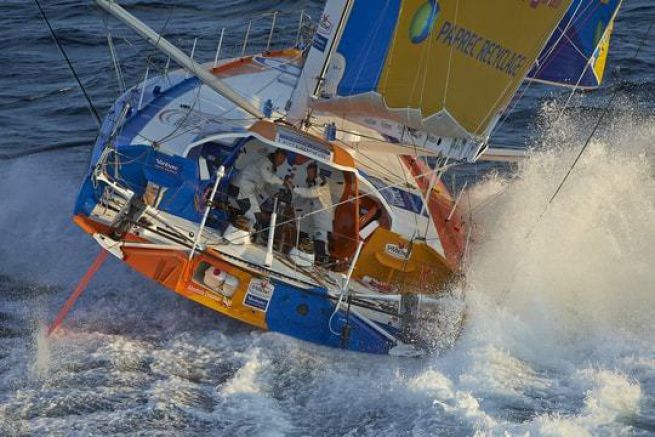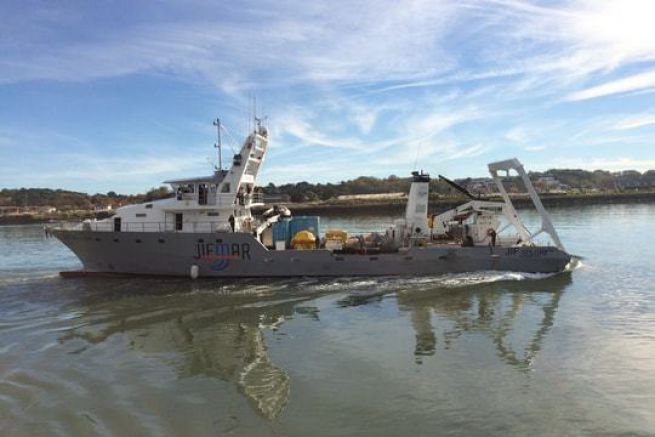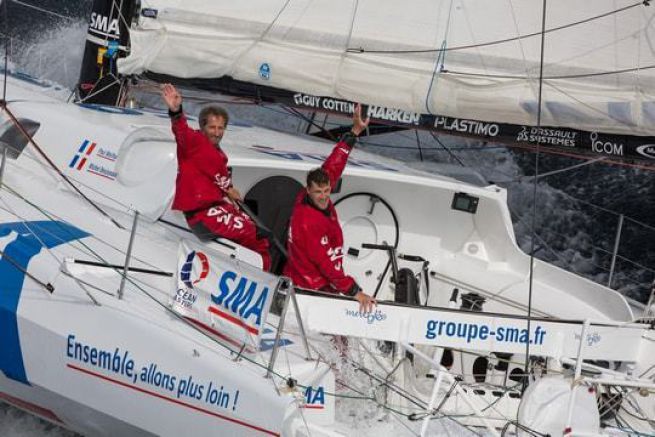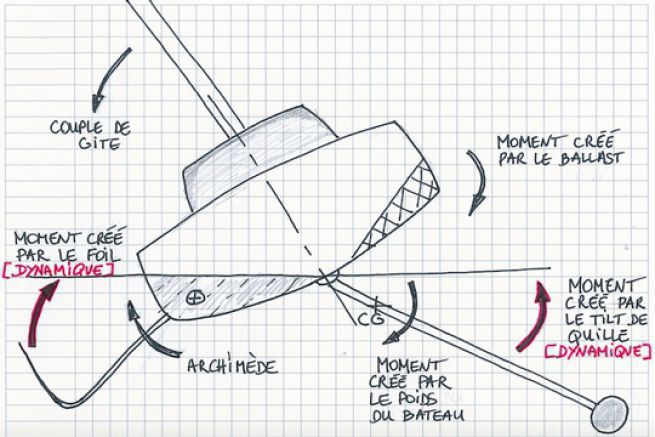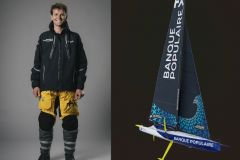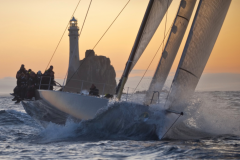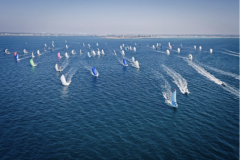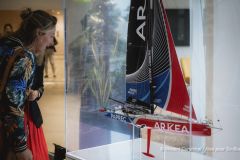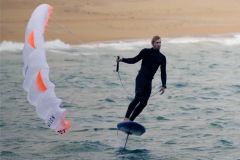Among the 29 IMOCAs entered in the Vendée Globe, they will actually be 6 latest-generation IMOCAs designed by the VPLP-Verdier duo and all equipped with foils for the Vendée Globe 2016. (Read change for the IMOCA Class ). Although the 60-foot boats will have to be equipped with a keel and a standard mast, the architects have found a way to make the boats even more efficient by adding foils.
Tilt on the keel
The keel mandatory for IMOCA, must have an angle of rotation between 4° and 9°. This axis of rotation, known as the"tilt", creates an angle of attack on the keel and thus relieves the boat. On the other hand, one of the unfavourable consequences of this tilt is the loss of righting torque, due to the force exerted in the wind.
Foils to regain the righting moment
To regain the righting moment lost by the keel and to dynamically lighten the boats, the architects firm VPLP-Verdier worked on foils Today, we have seen sufficient gains to be able to continue on this path. But we do not refrain from going back on something more traditional if we see that it is too difficult to set up or if it does not bear fruit.
We already know that there will be a significant gain in speed; that foils could save two days on a Vendée Globe. The differential will be highest at reaching. Downwind, the boats should also gain speed. Upwind, it will be more complicated, but upwind is only 10% of the time on a Vendée Globe .
How does a foil work?
A foil, when deployed, generates a vertical force to prevent the boat from heeling. And the faster the boat goes, the stronger this force is and prevents it from lying down. Thanks to this, the boat is more powerful and faster. To make the analogy, the boats that sail today fill ballast tanks to the wind, to counterbalance. A foil can have the same effect without having to weigh the boat down that much. That's very interesting.
We've set foot in a new era. From a theoretical point of view we see significant performance gains, now we must see what men are capable of doing with..
We did digital simulations of navigation, even with the swell to see how the boat was going to pass into the sea with its foils.
What's next?
For the moment, we see that this principle works and allows gains. It would be difficult for others not to follow. What developments may directly result from the appearance of these new appendices? The foils"widen" the hulls considerably. So why not reduce the width of the hulls?
Although some boats share the same hull mould like Banque Populaire VIII by Armel Le Cléac'h and Safran by Morgan Lagraviere, none of these 6 boats have the same foils, as the specifications differ according to the skippers.
Discover the presentation of the 6 foilers New generation of IMOCA foils, the future winner of the Vendée Globe?
